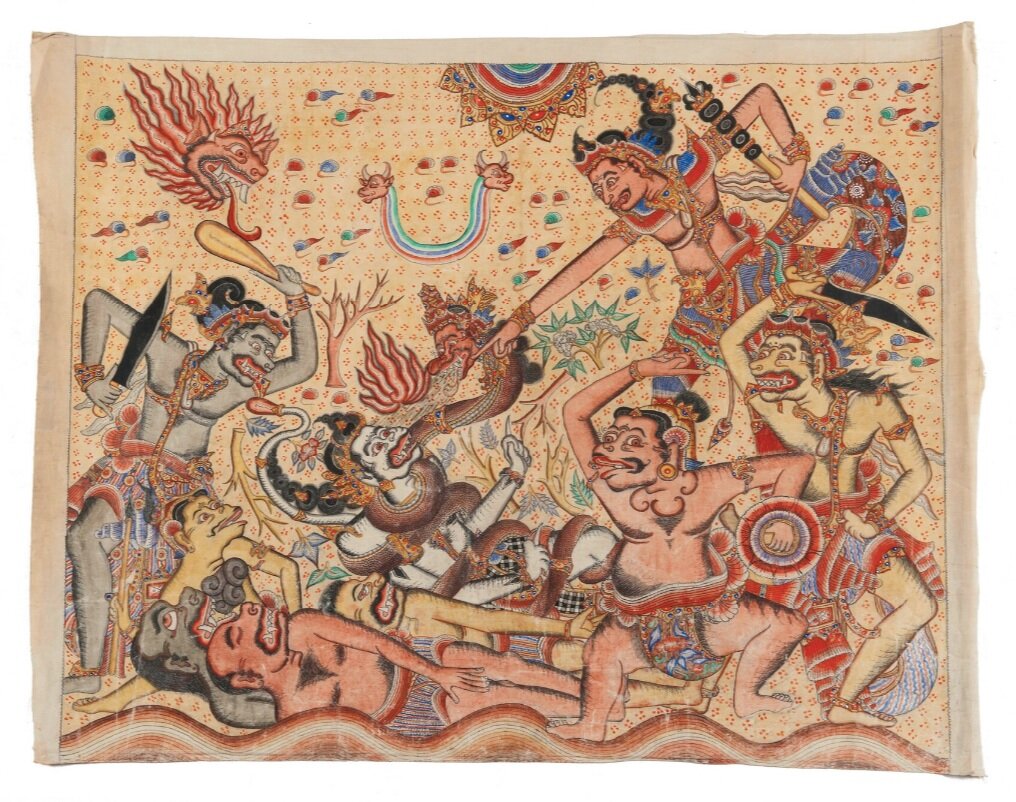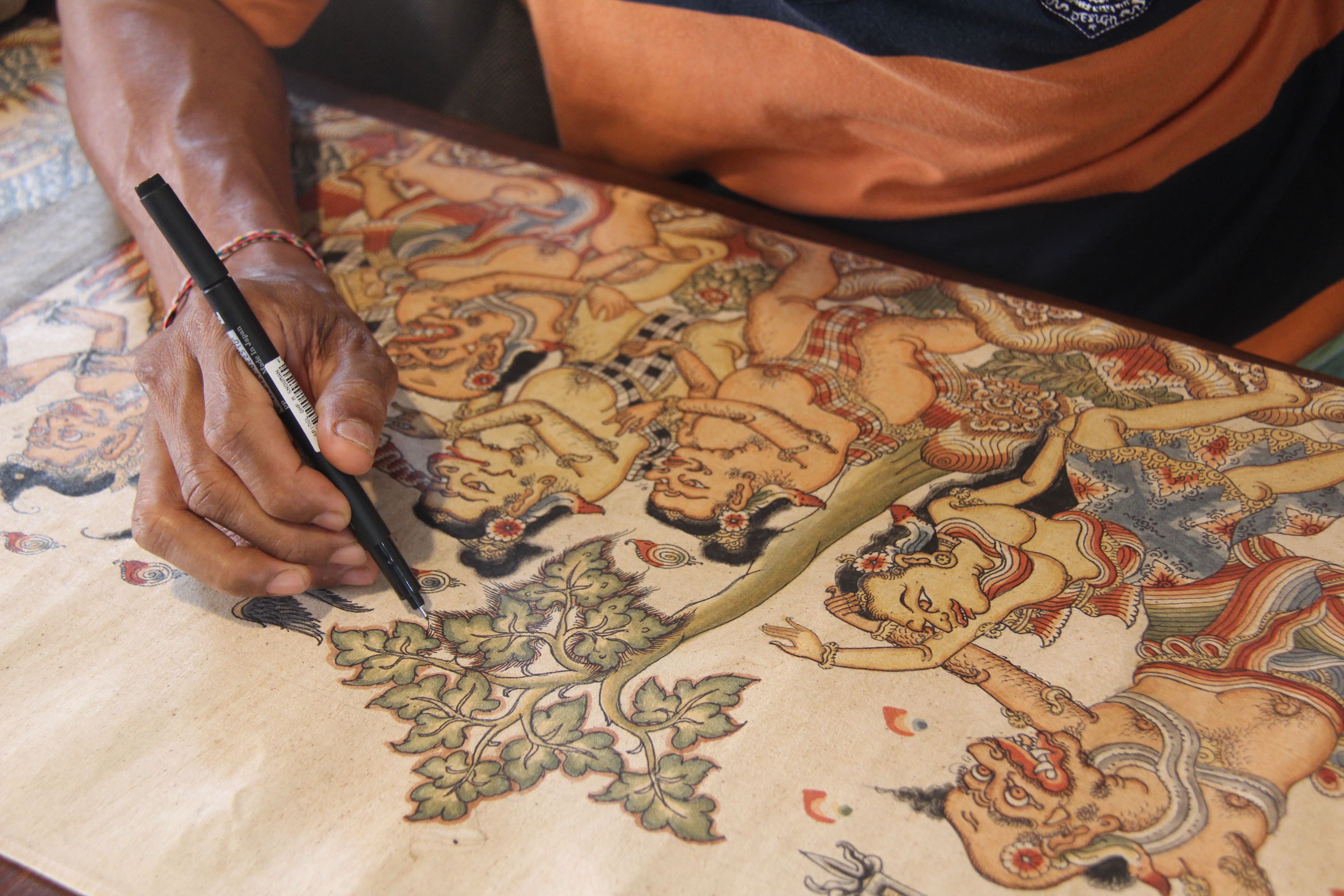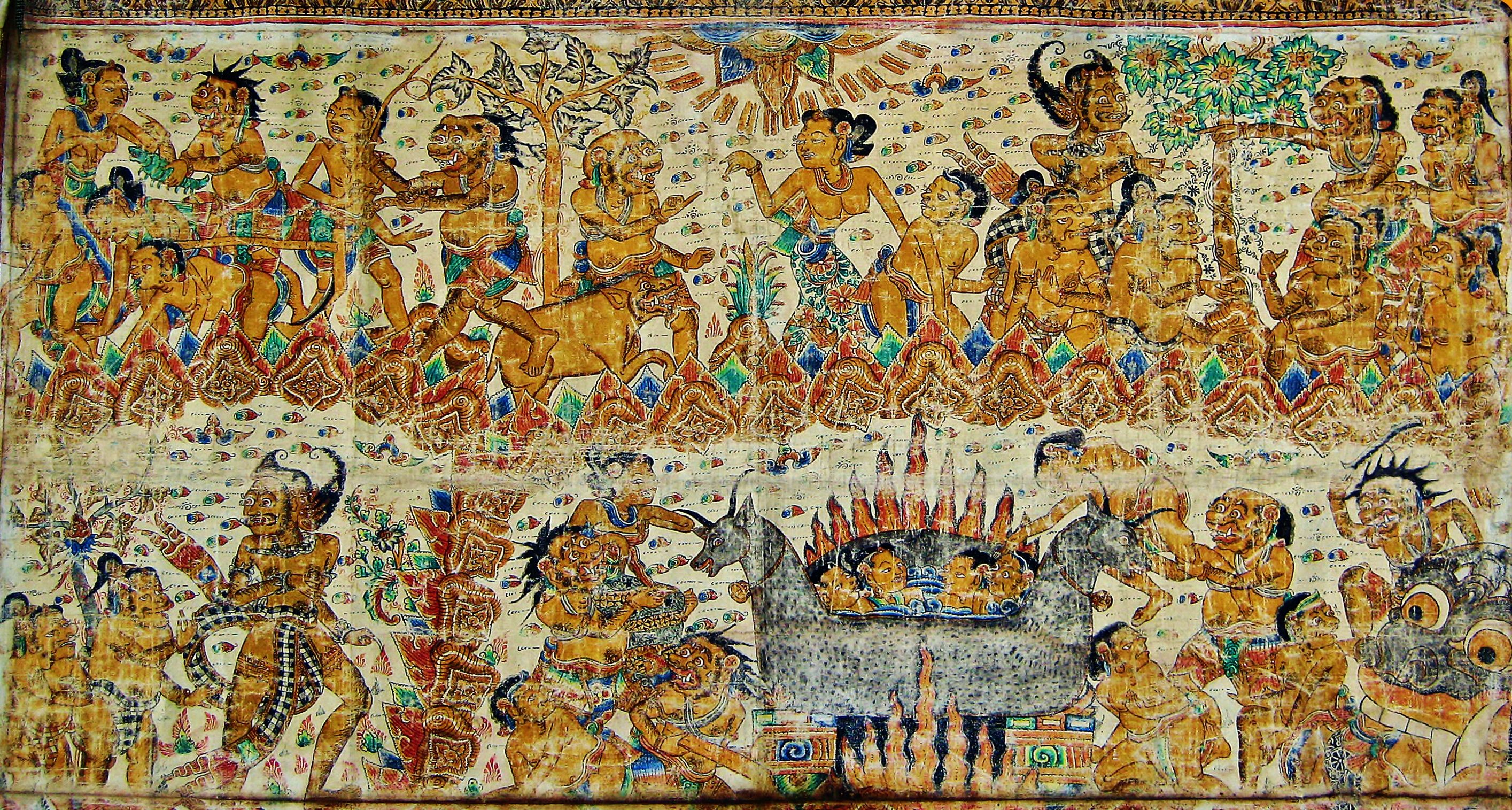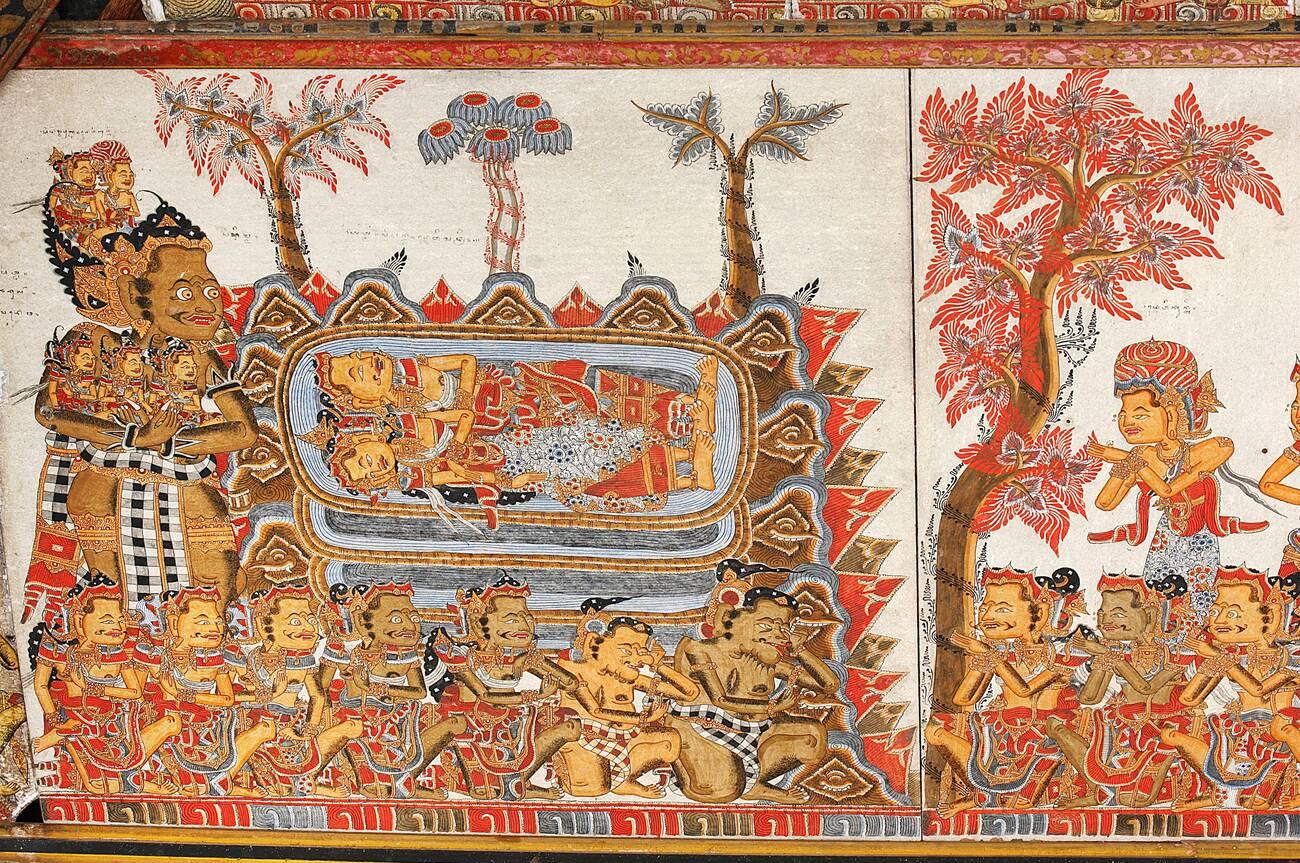In the year 1723, positioned before an expansive canvas, the master Balinese painter contemplates the intricate composition. The mind delves into the depths of time, conjuring the resounding clash and resonance of metallic instruments from a Balinese ensemble. The cloth before the artist transforms into a grand screen, awaiting the tales of an ancient Hindu epic to come to life through the art of wayang kulit shadow theater.
The Indigenous Beauty of Kamasan Painting Technique
The Brilliant Origin

In this moment, the artist embodies the essence of a dalang—a master puppeteer—breathing life into figurines and intertwining narratives that traverse realms. The historical tapestry whispers a narrative dating back over 2,000 years to the arrival of Indian traders on Nusa Antara's shores, bearing the gifts of culture and Hinduism. These gifts birthed the Wayang puppet theater, sowing the seeds for the intricate artistry of Kamasan painting.
Derived from the vivid imagery adorning the wayang, the classical style of Balinese painting evolved into a profound medium of storytelling and spiritual expression. Artisans from the ancient Majapahit Empire sculpted the earliest renditions, which later found their home in Bali, particularly in the village of Kamasan during the 16th and 20th centuries. The original Kamasan works were a communal marvel, a collective endeavor of gratitude from the village to the Divine, intertwining values and aspirations.
The colors for this sacred art were crafted from nature's palette—iron oxide stone for brown, calcium from bones for white, ochre oxide clay for yellow, indigo leaves for blue, and carbon soot or ink for black. These hues, imbued with the essence of the earth, brought to life the tales of gods and demons on bark, cotton cloth, and wood, adorning temples, pavilions, and the abodes of aristocrats during ceremonies and festivals.
The Ethereal Bond

To the Balinese, Kamasan paintings are more than mere strokes on canvas; they are a bridge connecting mortal realms to the ethereal. The brush in hand channels the esoteric and the invisible, translating their mysteries into a visual language that unveils the secrets of life according to scriptures and philosophies. The beauty of Kamasan paintings lies in the flowing lines and the pure, flat figurations that dance across the canvas, evoking spirituality in form.
To an outsider, Kamasan paintings may seem intricate and complex, lacking a central focal point. Yet, within the intricate details lies a symphony of multiple stories, akin to the shadows cast upon the screen during a wayang kulit performance. The canvas holds a profusion of visual information, an art form in which nothing overtly stands out, a tapestry of tight patterns and repetitive motifs.
Three Divine Realms and Evolving Living Tradition

In this timeless art, there exist three realms—the upper realm of gods and benevolent deities, the middle realm of kings and aristocrats, and the lower realm belonging to humans and demonic manifestations. Through meticulous attention to facial features, costumes, body size, and skin color, Kamasan paintings delineate ranks, figures, and character types, immortalizing the intricate tapestry of Balinese culture and spirituality.
These sacred narratives, drawn from Hindu and Buddhist scriptures and Balinese folktales, convey not only mythological themes but also high moral standards, aiming to instill virtuous conduct and harmony within society. Each stroke of the brush communicates balance, metaphorically aligning the artist with the divine, making Kamasan painting an authentic, living Balinese tradition that evolves with each brushstroke, embodying the timeless beauty of indigenous artistry.




 Billy Bagus
Billy Bagus
 Sep 28, 2023
Sep 28, 2023




